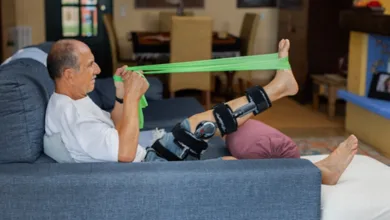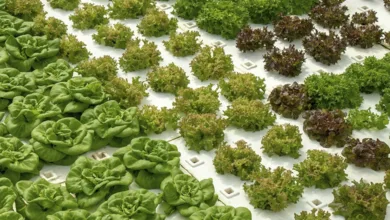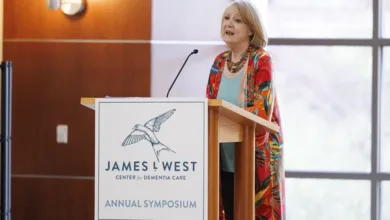How to Have Better Habits

One of the defining traits of human nature is the pursuit of continual self-improvement. Benjamin Franklin made a daily habit of tracking whether he exhibited 13 values, including temperance, frugality, cleanliness, and moderation. If he was lacking in one area, he redoubled his efforts to cultivate those values.
The Science Behind Habits
Franklin was using the rudiments of science to change his behavior. Science has caught up with Franklin’s pioneering efforts, and several books and dozens of scientific articles have examined the psychology behind changing habits. As we round the bases into 2022, there are reasons to be hopeful that goals like being more productive, losing weight, or whatever change you wish to pursue can be accomplished by understanding the science behind habits.
In early 2020, ABC News correspondent Dr. Jennifer Ashton spoke with KERA’s Kris Boyd about a wide range of health-related habits and how people can change those behaviors.
Ashton used a calendar to track her progress during a dry month to cut back on alcohol consumption.
“Seeing the results in black and white was massively helpful,” she said.
Cutting back on screen time took baby steps. Ashton started by cutting out looking at her phone while eating and then while walking. Cutting out time staring at her smartphone left her more aware of her surroundings and better able to sleep at night.
Using a Marketing Approach to Change Habits
Anyone who is looking to develop a new habit could learn a thing or two from marketing practices. “Piggybacking” is the process of tying a new habit to an existing one. The manufacturers of Febreze advertised their product as the final step after vacuuming. Rather than forcing customers to develop a new habit, spraying Febreze became part of existing cleaning practices. Piggybacking habits or patterns could include adding pushups to morning stretch routines or tying brushing your teeth to setting the alarm clock.
Breaking Bad Habits by Understanding their Triggers
A common trigger for drinking coffee is the time of day, for example. Preceding actions are another common trigger. Returning from work could trigger the beginning of an evening television-watching routine. Most, if not all, of our habits are tied to a trigger. Identifying these can help you break unwanted routines.
Recognizing the Reward – Habit Connection
Whether creating or breaking habits, current research suggests finding ways to reward those efforts can help you reach your long-term goals. The brain already has a reward system that releases dopamine when we perform an action that humans have evolved to see as beneficial. The dopamine high our ancestors enjoyed when they found a sugary treat encouraged repeats of that habit, which would have been helpful to our ancestors’ survival.
Some actions, like running, come with a natural reward known as runner’s high. If exercise isn’t your thing, you can motivate yourself by tying a treat to the end of a rigorous workout.
The Secret to Successfully Creating Better Habits
Studies regularly show around 10% of Americans successfully adopt or break a habit one year after making their New Year’s resolutions. While that high failure rate may suggest that making ambitious goals is a doomed endeavor, I believe any step toward a healthier lifestyle or any goal is worth the effort. Try seeing habit-forming as a game or an intellectual exercise. Once you unlock the secrets to changing one behavior, changing the second one will be that much easier.





